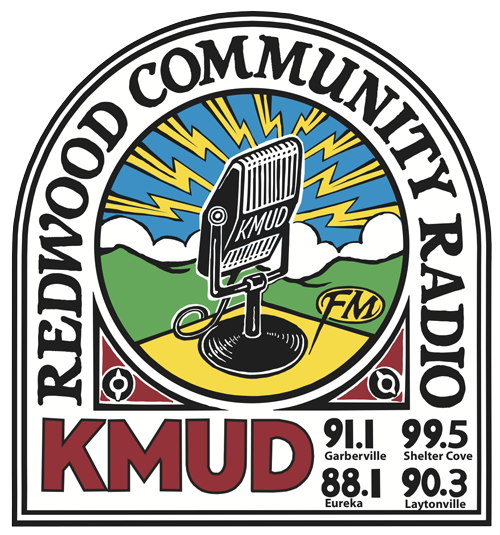KMUD News: A Juneteenth Special from Black Wall Street

In recognition of today’s holiday, KMUD News will air a Juneteenth Special recorded in Tulsa, Oklahoma — home of the historic Black Wall Street.
On June 19, 2020, KMUD’s Lauren Schmitt was on the ground in Tulsa, a city with deep Juneteenth roots. The Greenwood District — later known as Black Wall Street — was one of the most successful autonomous Black communities in U.S. history.
But in 1921, that thriving community was destroyed in what is now known as the Tulsa Massacre — one of the deadliest acts of racial violence in the nation’s history.
Exactly five years ago today, Schmitt was in Tulsa to mark the Juneteenth holiday and document community reactions ahead of then-President Donald Trump’s first post-COVID rally.
That Juneteenth fell less than a month after the police murder of George Floyd, amid a nationwide uprising for Black lives. Emotions were high, and many feared that history could repeat itself.
Tonight, KMUD revisits that historic weekend and honors the voices of Greenwood — past and present — as the fight for justice and liberation continues.































From Lauren Schmitt:
“Five years ago today, I was in Tulsa, Oklahoma, standing in the Greenwood District known as Black Wall Street on Juneteenth.
The country was still reeling from the murder of George Floyd, which exposed deep systemic injustices, and the Black Lives Matter movement was gaining national momentum. At the same time, President Donald Trump was holding his first re-election campaign rally since the start of the COVID-19 pandemic — controversially scheduled on Juneteenth — at Tulsa’s BOK Center. The date and location drew widespread backlash.
Tulsa is still haunted by the legacy of the 1921 Race Massacre, when the thriving, self-sufficient Black community of Greenwood was destroyed by white mobs.
According to TulsaHistory.org, “In the early morning hours of June 1, 1921, Greenwood was looted and burned by white rioters.” The Governor declared martial law, and National Guard troops imprisoned all 6,000 Black Tulsans for over a week.
The Tulsa Massacre unfolded over a 24-hour period, leaving 35 city blocks in charred ruins. More than 800 people were injured, and while initial reports listed 36 deaths, historians now estimate that as many as 300 people may have been killed.
More than 2,000 homes and businesses were bombed and burned, consumed by fire and hatred. While the precise cause of the massacre remains debated, the Tulsa Historical Society & Museum attributes it to Jim Crow racism, white supremacy, and land lust.
The Bank of Oklahoma (BOK) Center, where Trump held his 2020 rally, sits just blocks from the site of the massacre. The BOK itself has ties to discriminatory redlining practices that historically targeted Black residents and, according to some historians, even benefited from the aftermath of the destruction. Many viewed the choice of venue and date as a racially charged provocation — a dog whistle to white supremacist groups to descend on Tulsa during the holiday of freedom, Juneteenth, honoring the end to slavery in the United States.
Despite the presence of thousands of pro-Trump supporters, Black Lives Matter protesters, Boogaloo Boys, and other armed militia groups, the city remained largely peaceful. Aside from minor incidents, the only violence I saw came from law enforcement, who fired less-than-lethal rounds at demonstrators who were wrapping up their protest, including my colleague, who was reporting for the BBC at the time.
Tragically, the only deaths linked to that weekend were due to COVID-19, including former Republican presidential hopeful and Trump rally attendee Herman Cain. In the weeks that followed, Tulsa County experienced a sharp spike in cases, with a 116% increase reported by local outlet KJRH. The combination of the rally, counter-protests, and Juneteenth celebrations created what health officials described as a perfect storm for viral spread.
While it may now feel like a distant past, I’ll never forget what I witnessed — not just tension, but transformation. I captured moments of understanding and dialogue. More than once, it seemed things might boil over: folks in MAGA hats standing face-to-face with people holding Black Lives Matter banners. But again and again, people talked and listened. I heard things like, “I’ve never thought about it that way before,” and “I’m glad I got to hear your side.”
I saw people from opposing sides hug and I felt deeply grateful for those rare, human exchanges.
One of the most powerful scenes I documented was a pro-Black, pro–Second Amendment rally, with people from all walks of life coming together to take part. Their message was clear: being Black and armed does not make someone a criminal. The rally honored the life of Philando Castile, who was killed during a traffic stop after calmly informing the officer he was legally armed. Castile seemingly did everything right — he was polite, cooperative, and transparent — and was still shot seven times in front of his girlfriend and her young daughter. It was a reminder that the Second Amendment, like so many rights, is not always equally protected for all Americans. And that day, everyone was visibly armed — as Oklahoma has no gun laws beyond federal ones.
While I produced a full one-hour special from that day, tonight on KMUD News, I’m highlighting the voices of Tulsa’s Black community — the voices of resistance and freedom — to honor Juneteenth.”
